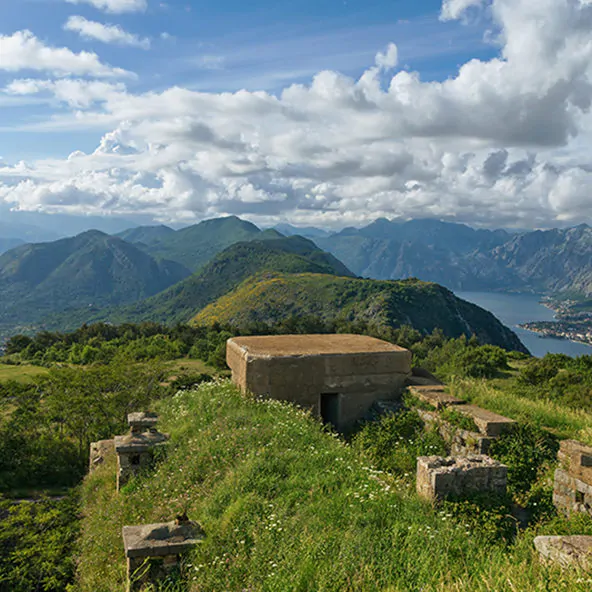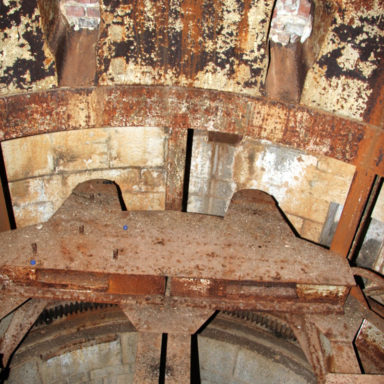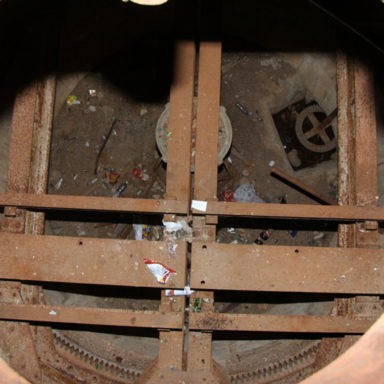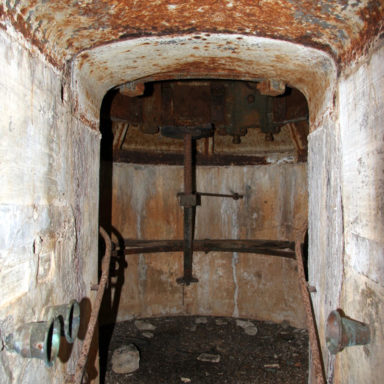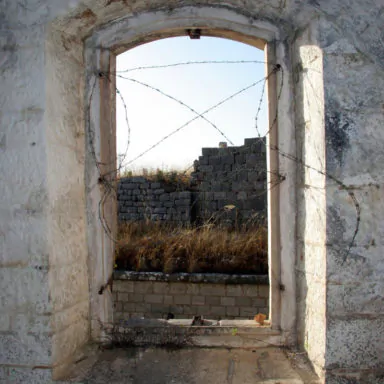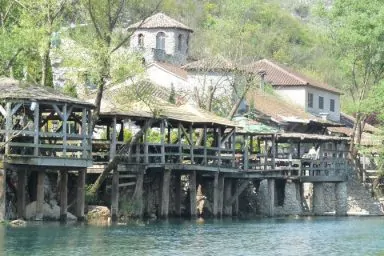The Goražda fortress is perhaps one of the most interesting fortresses at the Bay of Kotor. When it was built it was the epitome of military technology. The latest advances of warfare engineering were implemented here. The newest German weaponry was installed. Even today, the fortress is rather impressive.
Though it is located on a small mountain between Tivat and Kotor, it is hard to spot. The camouflage is perfect. Perhaps, that is the reason it has remained intact until today.
There is an old road from Kotor to Cetinje via Lovcen. Within 5 km from Kotor, you will see a sharp right turn, a road sign that points to the Goražda and the nearby village of Mirac, that is the road you need.
What should you know about Goražda Fortress
The Goražda fortress was one of Austrian strongholds at the Bay. It controlled the waters of the Bay near Tivat and protected it with long-range fire.
Built in 1886, it was reinforced in the beginning of the XX century by Austrians and Montenegrins.
Before the entrance, you will see an inscription that says THURMFORT GORAZDA. In German, it means ‘Goražda tower fortress’. The etymology of the name is not complex. The old Slavic language has a word, gorazd, that means apt, capable. In Poland, it is also a first name. In Hungarian, however the same old word, garazda, means ‘grumpy’. There is a place similarly called Gorazde, near Sarajevo in Bosnia, that was known for being a place of bloody fighting during the Bosnian war of 1992-1995. It is most likely that it is the local name of the hill where the fortress stands. Austrians did not tend to invent names for their fortifications.
The architecture of the fortress is quite unusual. I will describe it starting from the entrance, where you see a bridge over a moat or specifically a concrete slab. It appeared here in the XX century, earlier it was probably a drawbridge. The hinges are still there. From the bridge, you can see gun ports to your right. A caponier protects the moat, there are four of them in total.
In front of you, there is the entrance hall and gate hinges. To the left and right of the corridor, the remains of the rods are still visible. They were 1 metre in length and covered in barbed wire. After the war they were removed, so that local children would not come to harm. The corridor twists in a way that prevents you from seeing through it, protecting it from fire. As the result, the left wall is almost destroyed, perhaps by large-caliber fire. After the corridor, there is another drawbridge.The gates to the fortress stand on an islet surrounded by a moat. You can now see the entrance to the main building. Note the window shutters and the doors of the fortress. There are gun ports everywhere. On the doors there is a Yugoslavian flag with some fond words about the people’s beloved leader, Josef Broz Tito.
We will not go any further to avoid spoilers but be sure to check every door and every room. Do not be afraid to go to the end, as the best is always left until last. Note the small metal sinks in the walls. When you understand the purpose of them, you will really see that the engineering is top notch!
Now let us consider the armaments of the Gorazda. This is the most interesting part.
The fortress was built with long-distance targets in mind so within the main building, there were four 120-mm cannons. Two were aimed at Kotor, the other two at Budva. The horizontal direction was controlled with a special heel that moved across the floor (metal plate) and the vertical direction was maintained with a cable that went through a ceiling ring. These parts are still there, but the guns themselves have been removed and the gun ports filled in.
Tivat and the vicinity were covered using the invention of Hermann Gruson, a German military engineer and a partner of the Krupp family, known as the largest weaponry manufacturers in the world for the last 400 years. The invention itself was rather simple: a cylinder on wheels with a rotating spherical roof that housed a small-caliber cannon (see image). The cylinder was manned. But in this case, it is a huge sphere with a diameter of 3m rather than a small mobile vehicle. It carried two 120-mm guns, which is very serious by any standards. The installation was controlled by a single operator, and the rotary mechanism was manned by two soldiers. The range of the guns exceeded 10 km. Only five of these were built. All of them were used by Austro-Hungary in Eastern Europe. Today, only one remains at the Gorazda fortress. The mechanism and the chassis are well-preserved. You can find this on the top of the fortress in the centre.
There are concrete pillboxes at the flanks of the fortress. They were added at the beginning of the XX century. Nearby you can see small Gruson cannons, dug into the earth. You can see them through the portholes in the pillboxes. On the top of each cannon, you will see the mark of Emil Skoda metal works.
